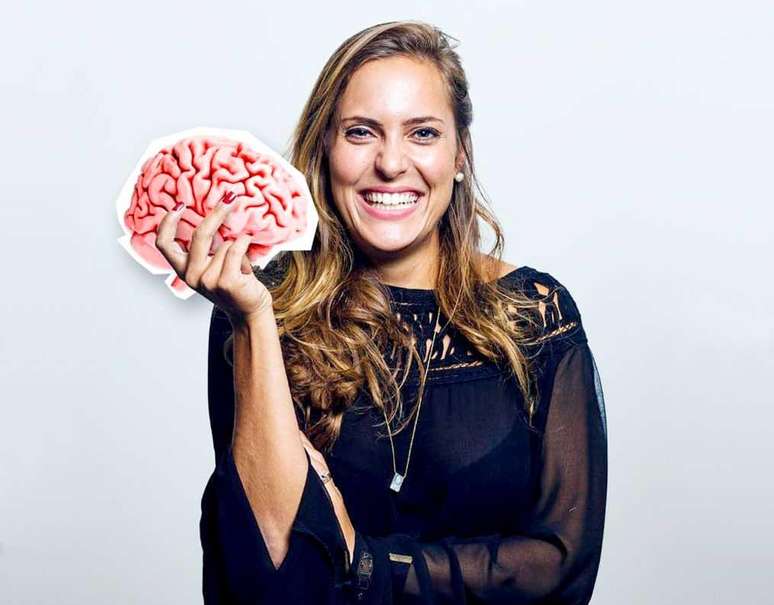Summary
Excessive use of artificial intelligence for productivity gain can compromise brain health, reducing creativity, critical thinking and well -being, which require a balance between technological efficiency and human development.
The idea of automating the processes, the delegation activities and acceleration results seems, at first sight, extremely efficient and promising. After all, who does not want to get a faster execution, increase productivity and reduce manual effort? We live in an increasingly accelerated society, in which competitiveness requires organizations to become more agile, efficient and able to respond quickly to the change of the market. In this context, the automation of routine activities, the use of artificial intelligence and the optimization of work flows seem to be natural and necessary solutions to maintain competitiveness.
However, it is essential to reflect on the depth: at what cost do we give up when they adopt this logic of constant efficiency? What are the invisible and often neglected consequences in this process of accelerated digital transformation?
Neuroscience, a branch of knowledge that studies the functioning of the human brain, has already shown that the brain is modeled by use and suffers from pruning for disuse. This dynamic is one of the basics of the functioning of the brain and deeply influences our ability to learn, create, decide and adapt to change. The synaptic pruning thus called, which is more intense in childhood and adolescence, continues to occur to a lesser extent for life, every time the neural connections are no longer activated frequently. That is, all the skills that we cease to exercise, every practice that we cease to cultivate, the brain interprets useless and, over time, cancels. This natural adaptation of the brain, although it is a strategy of neural economy, brings with it important risks when we apply this logic to our daily life, especially in the work environment.
With the progress of generative artificial intelligence, such as chatgpt, we are outsourcing not only routine tasks but entire cognitive functions. Deciding, reflecting, writing, imagining – activities that previously required a profound involvement, creativity and critical thinking – can be automatically performed by short instructions and instant answers. This transformation has profound neurological implications and, if not carefully considered, can compromise mental health, the ability of innovation and the development of essential skills for the future.
From the point of view of neuroscience, this change is worrying. When we do not use the prefrontal cortex, the brain area responsible for planning, judgment, creativity, decision -making and emotional regulation, other more primitive brain systems tend to take control. These include the limbic system and the survival axis, which activate the automatic struggle or the escape responses, increasing emotional reactivity and reducing the ability to reflect conscious. This constant activation of automatic emotional responses decreases our ability to think rationally, to plan clearly and solve complex problems in a creative way.
The impact of this on mental health and organizational functioning is alarming. Among the effects observed, we can mention:
• Reduction of critical thinking and analysis capacity, compromising the strategic decision -making process.
• Increased impulsiveness and emotional reactivity, making individuals more susceptible to conflicts and stress.
• Less tolerance to ambiguity and complexity, making innovation and adaptation to unpredictable changes difficult.
• Impoverate of the vocabulary, especially in emotional language, hindering the expression of feelings and empathy.
• disconnected with the dopaminergic reward system, which regulates motivation, involvement and pleasure in learning.
These changes are not only individual but collective. They are already perceived in teams and leaders, where accelerated, hypereast and low reflection environments make the brain more reactive than creative. It works like a trap: the search for shorter efficiency by reducing the time spent in complex cognitive tasks generates a growing medium and long -term vulnerability. This vulnerability occurs in reducing innovation capacity, in the loss of resilience in the face of difficult challenges and the inability to develop a culture of continuous learning.
And the most serious aspect of this situation? Which KPI (performance indicator) can we use to measure these impacts? The answer is: nobody is really measuring these invisible effects. The organizational climate is silently corroded, almost imperceptible, but of decisive importance for the future of organizations. Less innovation, more insecurity, less dialogue, more communicative noise. Less real learning and more automated repetition. All this happens without appearing in the management dashboard of traditional people, which often focus on tangible and easy -to -measure metrics such as productivity, absenteeism or revenue.
This collective brain impact is silent, but of size that can compromise the sustainability of the business. The regulatory standard n. 1 (Nr-1), which deals with health and safety at work, already recognizes psychosocial risks as real damage to mental health. However, what many have not yet achieved is that even cognitive overload and mental impoverishment represent serious and often invisible risks for organizational well -being and sustainable performance. The negligence with brain health can lead to invisible costs, such as the fall of creativity, the increase in turnover, the difficulty in solving the problem and reduction of commitment.
In a world that enhances agility, response speed and quick adaptation, silence, break and focusing become high strategic resources. Because, without mental space, the brain simply cannot record, process and maintain essential information for the decision -making process and sustainable growth. Without adequate registration, there is no conservation; Without retention, there is no real transformation. This chain of processes depends on an environment that promotes reflection, full attention and continuous learning, the elements that are sacrificed in the incessant research of efficiency.
If your company is not yet aware of these aspects, you could already be late in the preparation of the challenges of the future. Innovation, creativity and resilience depend on the health of the optimized brain. Fortunately, there is good news: new solutions are emerging. One is an innovative approach that uses neuroscience and artificial intelligence to carefully map the invisible impacts of organizational culture on the collective brain. This tool identifies the risks, bottlenecks, models and real levers to improve climate, involvement, learning and well -being sustainablely.
All this through a system that uses it was in favor of the human brain, not vice versa. A system that speaks the language of human resources and leadership, promoting real development for those who need it most. Because, while many still speak of artificial intelligence, the true future of high performance begins taking care and preserving mental health and human intelligence. Investing in the health of the team’s brain is not only a well -being strategy, but a long -term intelligent decision for innovation, creativity and organizational resilience.
This paradigm change can be the differential that guarantees the competitiveness and sustainability of your activity in the world of tomorrow. After all, the organizations that give priority to mental health, reflection and cognitive development will be better prepared to face the challenges of a constantly changing market. In addition, this cure promotes a healthier, more motivating and more human work environment, in which people feel appreciated, understood and motivated to contribute to the best. Therefore, the investments in brain health are not only a question of social responsibility or well -being, but a survival and sustainable growth strategy.
Therefore, it is essential to rethink the way we conduct our work, leadership and management of people’s work. It is necessary to create spaces that allow pauses, reflections and the development of essential cognitive abilities. True innovation is not only in technology, but in the ability to align this technology with well -being and human potential. After all, the success of an organization eventually depends on the well -being and mental health of its people. And this is one of the greatest lessons that neuroscience teaches us: taking care of the brain is taking care of the future.
Marina Marzotto Mezzetti specializes in applied neurosciences and founder of neuro science (Efi).
Source: Terra
Ben Stock is a lifestyle journalist and author at Gossipify. He writes about topics such as health, wellness, travel, food and home decor. He provides practical advice and inspiration to improve well-being, keeps readers up to date with latest lifestyle news and trends, known for his engaging writing style, in-depth analysis and unique perspectives.




-t8431tbjr50x.jpg)



